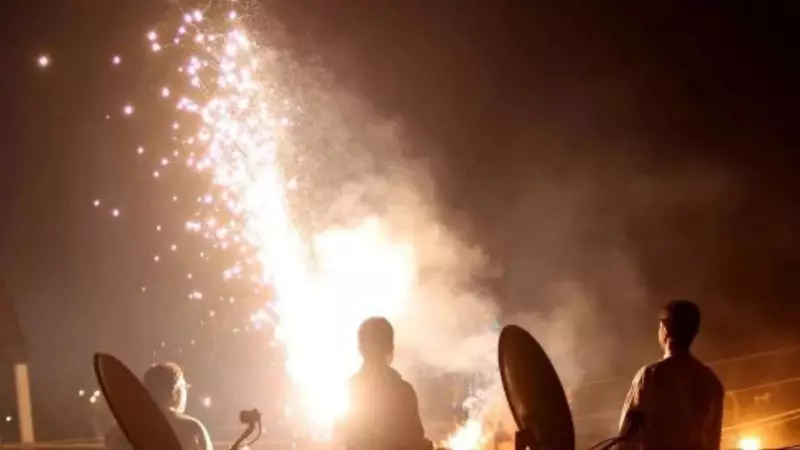
The festive cheer of Diwali has been overshadowed by a familiar, toxic reality in Delhi as the city woke up to dangerously polluted skies the morning after celebrations. Despite partial restrictions on firecrackers, the capital's air quality plunged into the 'Severe' category, painting a grim picture of the ongoing environmental crisis.
The Alarming Numbers
Data from the Central Pollution Control Board reveals shocking figures across monitoring stations. Anand Vihar recorded an AQI of 999 at 7 am, while Punjabi Bagh and RK Puram registered 898 and 893 respectively. These numbers far exceed safe limits and pose serious health risks to residents.
Firecrackers vs Weather: The Double Whammy
While firecracker violations contributed significantly to the pollution spike, meteorological conditions played an equally crucial role. Calm winds and low temperatures created a toxic trap, preventing the dispersion of pollutants and allowing hazardous particles to accumulate in the atmosphere.
Health Advisory in Effect
Medical experts have issued urgent health warnings, particularly for vulnerable groups:
- Children and elderly advised to avoid outdoor activities
- Asthma patients recommended to keep medications handy
- General population suggested to wear N95 masks when venturing out
- Indoor air purifiers recommended for homes and offices
The Enforcement Challenge
Authorities reported numerous violations of the firecracker ban across the city. The Delhi Police registered multiple cases, particularly in outer Delhi areas, highlighting the implementation challenges faced by enforcement agencies during festive periods.
A Pattern of Pollution
This year's post-Diwali air quality follows a concerning pattern observed in previous years. The combination of festive emissions, stubble burning from neighboring states, and unfavorable weather conditions continues to create a perfect storm for Delhi's pollution crisis.
As Delhiites struggle to breathe clean air, the post-Diwali pollution spike serves as a stark reminder that temporary measures may not be enough to combat the city's deep-rooted environmental challenges.





